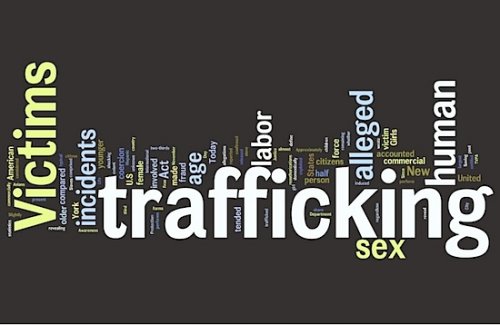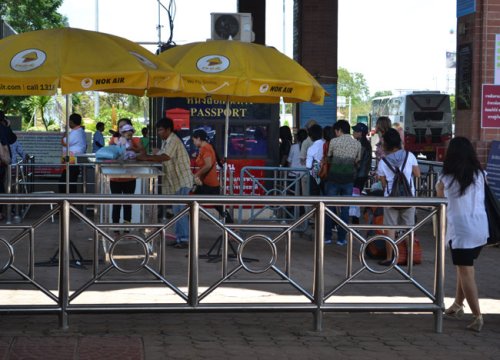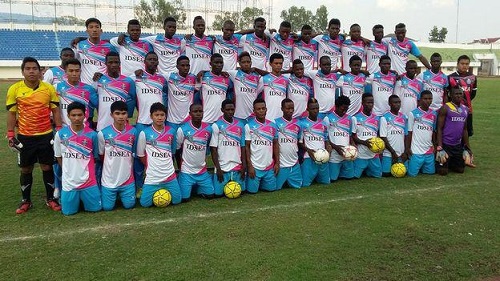“Wanted Wife: Good Salary” Ads Tricked Lao Women to Marry Chinese Men
Source: Radio Free Asia
Laotians are worried that a recent string of “wife wanted” ads on social media – offering payments of thousands of dollars per month – will lure young women into human trafficking operations where they will be abused and forced to work like slaves.
“Lao wife wanted; a good salary: 100 million kip [nearly U.S. $6,000] per month,” a recent ad on Facebook said — an unheard sum of money in the poor Southeast Asian country.
Another one on a news website NBC Lao News said: “Singles can apply; Lao wife wanted; salary: 100 million kip; share immediately!”

The ads apparently are placed by Chinese men who want Lao wives, but residents say that women who respond to them never get paid those princely sums.
City-dwellers are largely aware of the scam, but those in the countryside, many of them ethnic minorities from marginalized backgrounds, have taken the bait.
Some women who respond are sent to China. Others wind up in the Golden Triangle Special Economic Zone, a gambling and tourism hub catering to the Chinese and situated along the Mekong River where Laos, Myanmar, and Thailand converge.
“Many Chinese men will go there, establish some kind of relationship like girlfriend-boyfriend with Lao girls and women, then pay a dowry to the parents and marry them,” said a young Lao woman from Luang Namtha province.
Parents in remote areas who are hungry for money let their daughters marry the Chinese, she told Radio Free Asia on Thursday.
“But once their daughters are taken to China, the parents are unable to contact them,” she said. “Some of the traffickers or middlemen are somebody they know, [and] they lure them by saying the [women] will work in a neighboring country where they can make a lot of money. Because they’re poor, they take the offer.”
Desperate for money
Laos is a hotbed for trafficked women who are taken across the border to marry Chinese men, given a shortage of eligible Chinese women due to the country’s gender imbalance.
It is part of a larger regional problem as the poor girls and women from Cambodia, Vietnam, Myanmar, Indonesia, North Korea, Pakistan and Nepal have been trafficked.
Economic hardship in Lao villages caused by the COVID-19 pandemic sparked a new surge in the trafficking to China of Lao women and girls desperate to find jobs, despite travel restrictions aimed at stopping the spread of infections, RFA reported in 2021.
A multi-year economic crisis with surging inflation, currency depreciation, increasing amounts of foreign-owned public debts, and ongoing rampant corruption have forced many people to get second jobs to make ends meet or to come up with money another way.
A Lao woman from Xaysomboun province, also in the north, who like other sources in this report requested anonymity for safety reasons, said she too saw the ads on social media and that there have been many cases of Chinese men entering the country to obtain a bride.
“Many Lao girls and women who fall victim to this kind of trick are mostly members of ethnic groups because they are poor,” she said.
Lao authorities campaign against the dangers of human trafficking once a month in the province, trying to educate the public about the country’s anti-human trafficking law and the dangers of different kinds of human trafficking, but their message falls on deaf ears, she said.
“The girls and women won’t pay attention to the campaign because they need money,” the woman said. “They want to improve their living conditions, so they agree to marry Chinese men.”
‘They just disappear’
A Laotian man in Luang Prabang province who has also seen the social media ads, said parents are starting to become more careful, keeping their sons and daughters under close watch and telling them not to believe the ads.
Many more Chinese are coming to Laos now that China has reopened its borders following the dropping of COVID-related lockdowns and travel restrictions, said an official in Luang Namtha province.
“As a result, more Laotians are becoming at risk of being trafficked,” he said. “They are tempted, [and] they need money and want to go to a foreign country.”
Women who want to find jobs can seek assistance from the government-funded Lao Women’s Union, a nationwide women’s rights organization, he said.
“It’s more dangerous now because many of them once they enter the SEZ can’t be contacted, so they just disappear,” he said about the Chinese-controlled zone. “In most cases, the men will take the women to China.”
In 2022, on International Anti-Human Trafficking Day, July 30, about 540 Laotians including 448 women have been victimized by human trafficking since 2014.
The Lao government identified 110 trafficking victims in 2021, including 30 adult women, 62 girls, five adult men, and 13 boys, though it did not identify what types of trafficking they were subjected to, according to the U.S. State Department’s 2022 “Trafficking in Persons Report.”
“[G]iven the government’s tendency to include forced and fraudulent marriage cases with victim identification data in past years, this figure likely included forced and/or fraudulent marriage cases that featured corollary sex or labor trafficking indicators,” the report said, adding that traffickers exploited the majority of these victims abroad, mostly in China and Thailand.
In 2020, the Lao government reported 142 trafficking victims, which included 21 victims of sex trafficking, 39 victims of labor trafficking, 66 victims of fraudulent marriage, and 16 victims of other forms of exploitation, according to the report.




